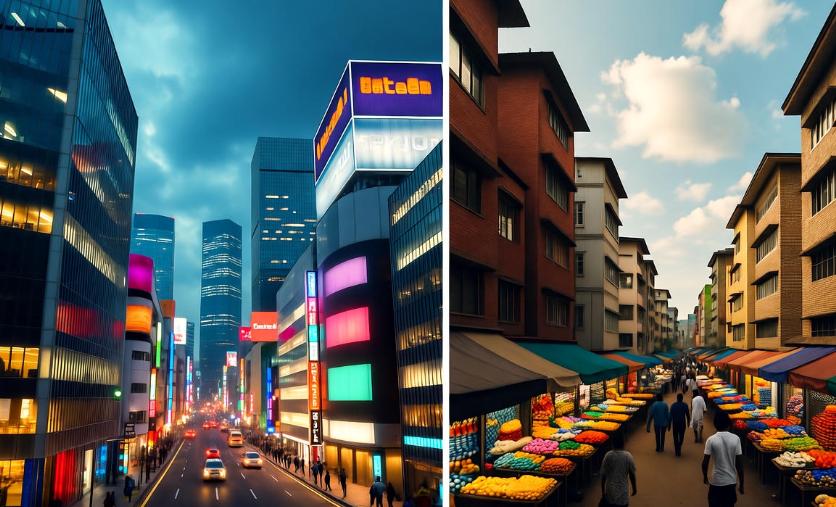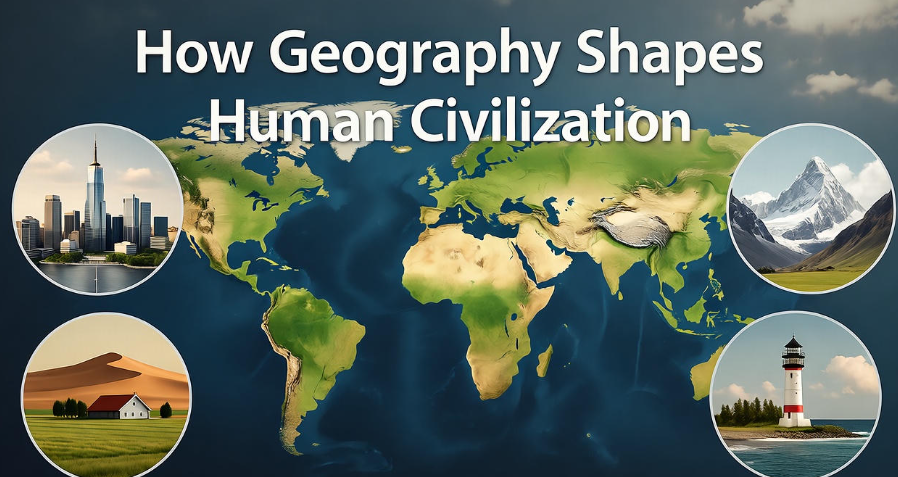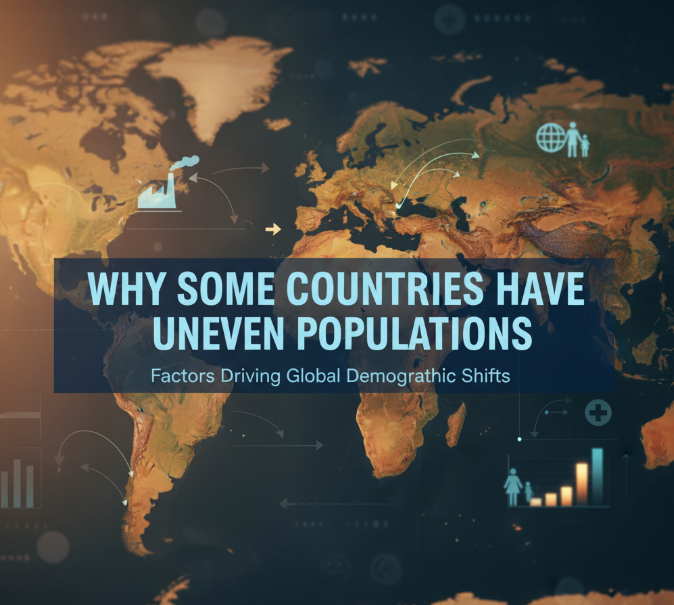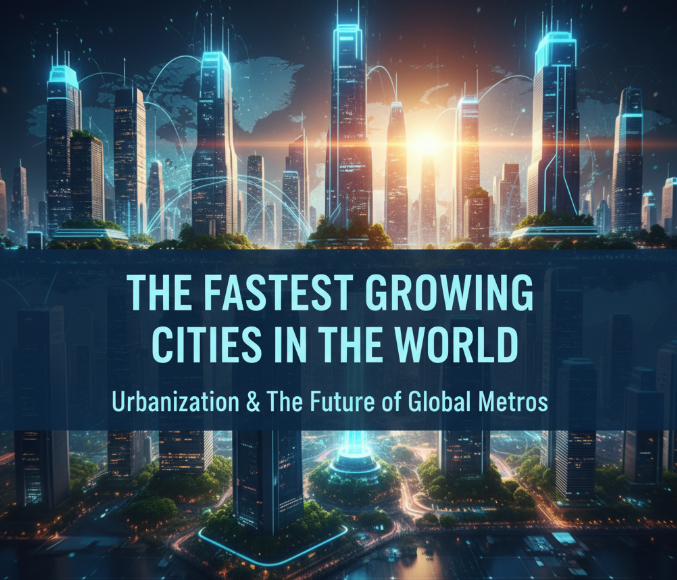Every day, millions of people move, live, and work in cities. In 2025, some cities have grown so big that they seem like entire countries in themselves. Below we explore the top most populated cities in the world in 2025, what makes them unique, and some challenges they face.
Let me warn you — these numbers are estimates. Definitions differ (city proper, metro area, urban agglomeration), so don’t take them as exact to the last person. But they do give a good picture.
Top 10 Most Populated Cities in 2025 (Estimate)
Here’s a table of the top 10, based mostly on urban agglomerations and metro area data from sources like World Population Review and UN projections. World Population Review+1
| Rank | City / Metro Area | Country | Approx Population (2025) |
|---|---|---|---|
| 1 | Tokyo | Japan | ~ 37,036,200 World Population Review |
| 2 | Delhi (New Delhi region) | India | ~ 34,665,600 World Population Review+1 |
| 3 | Shanghai | China | ~ 30,482,100 World Population Review |
| 4 | Dhaka | Bangladesh | ~ 24,652,900 World Population Review |
| 5 | Cairo | Egypt | ~ 23,074,200 World Population Review+1 |
| 6 | São Paulo | Brazil | ~ 22,990,000 World Population Review |
| 7 | Mexico City | Mexico | ~ 22,752,400 World Population Review |
| 8 | Beijing | China | ~ 22,596,500 World Population Review |
| 9 | Mumbai | India | ~ 22,089,000 World Population Review |
| 10 | Osaka | Japan | ~ 18,921,600 World Population Review |
You’ll notice something interesting: most of these big cities are in Asia. That’s because Asia is urbanizing fast, and many large nations with big growth rates are in that continent.
A Closer Look at the Top Cities
Let’s talk a bit about the top few. I’ll sprinkle in interesting facts and challenges:
Tokyo, Japan
Tokyo holds the top spot. With about 37 million people, it’s a powerhouse of business, technology, and culture. Destatis+1 It combines ultra-modern skyscrapers and neon-soaked streets with historic temples and quiet gardens. Transportation is super efficient — trains often run every few minutes. But with so many people, real estate is extremely expensive, and some neighborhoods feel intensely dense.
Delhi, India
Delhi’s growth is wild. It’s not just one city — the National Capital Region (NCR) includes satellite cities like Noida, Gurugram, Faridabad, Ghaziabad. This makes the urban sprawl huge. The population is nearing 35 million. Destatis+1 The rapid expansion brings big stress on roads, sewage, pollution, public transport, and services. Yet, it remains a cultural, political, and economic hub.
Shanghai, China
As a finance, commerce, and shipping center, Shanghai draws in migrants from across China. Its urban design includes a mix of modern districts and preserved older lanes. The metro, skyline, and city planning are often held as models. Challenges include managing pollution, income inequality, and maintaining balance between growth and livability.
Dhaka, Bangladesh
Dhaka is one of the fastest-growing cities on earth. Many people move from rural areas seeking work, especially in the garment industry. The city struggles with congestion, flooding, informal housing, and inadequate infrastructure. But its energy, street life, density, and resilience are real.
Cairo, Egypt
Cairo is the biggest city in Africa in many rankings. Its traffic, dense neighborhoods, and historical legacy (pyramids nearby!) make it unique. But rapid growth, desertification, and resource constraints are major issues.
Patterns & Observations
-
Asia Dominates: Out of the top 10, Asia has 7 cities.
-
Urban Agglomeration vs City Proper: Many numbers refer to metro / agglomerated areas. The “city proper” (strict administrative boundary) is often smaller.
-
Growth Rate Differences: Some cities (like Dhaka, Delhi) are growing fast; others have slower growth or even declining in inner city as people move outward.
-
Infrastructure Under Pressure: Transportation, water, sanitation, housing — all under strain in megacities.
-
Environmental Risks: Flooding, heat waves, pollution, resource scarcity — these become critical as cities get denser.
Why These Cities Grow So Big
Here are some reasons:
-
Rural-to-Urban Migration
People leave countryside for jobs, education, services. Big cities pull in large inflows every year. -
Economic Opportunities
Big cities often concentrate industries, finance, services — more jobs. -
Better Access to Services
Hospitals, education, technology — urban areas often provide more opportunities. -
Natural Population Growth
Even inside cities, births minus deaths contribute to growth. -
Administrative Mergers / Expanding Boundaries
Sometimes, city limits are expanded to include suburbs, inflating the numbers.
Challenges Big Cities Face
Being huge brings big headaches too:
-
Traffic congestion & commuting time
-
Air and water pollution
-
Housing shortage; slums
-
Overburdened infrastructure (sewage, power, public transport)
-
Inequality and social divisions
-
Environmental risks (floods, heat, storms)
-
Governance & planning complexity
When millions live so close, even small failures become major disasters.
Beyond Top 10 — Cities to Watch
Here are a few others to keep an eye on:
-
Lagos, Nigeria — Africa’s fastest urbanizing region. Wikipedia+1
-
Kinshasa, DR Congo — huge growth potential. Wikipedia+1
-
Jakarta, Indonesia — in some measures, part of top urban areas. Wikipedia
-
Bangkok, Chennai, Bengaluru — growing fast in Asia. Wikipedia+1
These might climb higher in coming decades.
What Defines “Most Populated”? It’s Tricky
You might wonder: why do different sources show different lists or orders? Because:
-
Different definitions (city proper, metro area, urban agglomeration)
-
Different data sources, census timetables
-
Varying inclusion or exclusion of suburbs
-
Migration, fast growth, and data lag
So when someone says “most populated city,” it’s good to ask: by what measure?
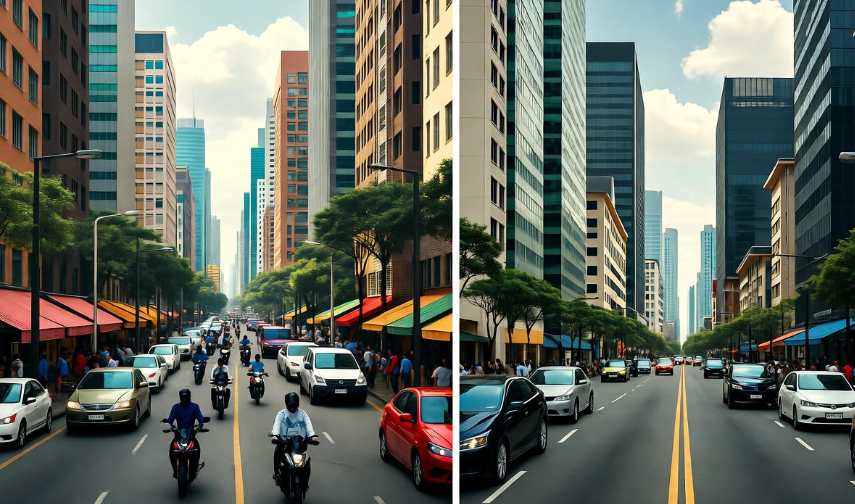
Fun Comparisons
-
Tokyo, the largest, has ~37 million people — that’s like the population of some mid-sized countries packed into one continuous region.
-
Mumbai and Beijing each cross 22 million in many estimates.
-
The gap between rank #1 and #10 is huge — almost double or more.
-
Some “city proper” populations (like Paris or London) may be moderate, but when counting metro area, they become massive.
Future Outlook
-
The number of megacities (over 10 million) will increase. Destatis+1
-
By 2035, many African cities are expected to break into the top ranks. The Guardian
-
Cities will need to rethink planning — green zones, transit, resilience, affordable housing.
-
Technological solutions (smart cities, sensors, data) may help.
-
But social inclusion, equity, and managing population pressure will be key.
FAQs
Q: Which is the largest city in 2025?
A: Tokyo tops the list, with about 37 million people in its metro/urban area. World Population Review+1
Q: Is Mumbai in the top 5?
A: No — Mumbai is usually found around 9th or 10th in the top 10 list, with ~22 million people. World Population Review
Q: Why do some lists include New York or Los Angeles?
A: In “city proper” metrics, US cities may show up, but in global megacity / metro area metrics, Asian and Latin American cities dominate.
Q: How many megacities will there be by 2035?
A: According to projections, there may be 48 megacities (cities with more than 10 million) globally by 2035. Destatis
Q: Are bigger cities always better?
A: Not necessarily. Bigger cities bring more opportunities but also more problems — inequality, stress on infrastructure, pollution, high living cost.

